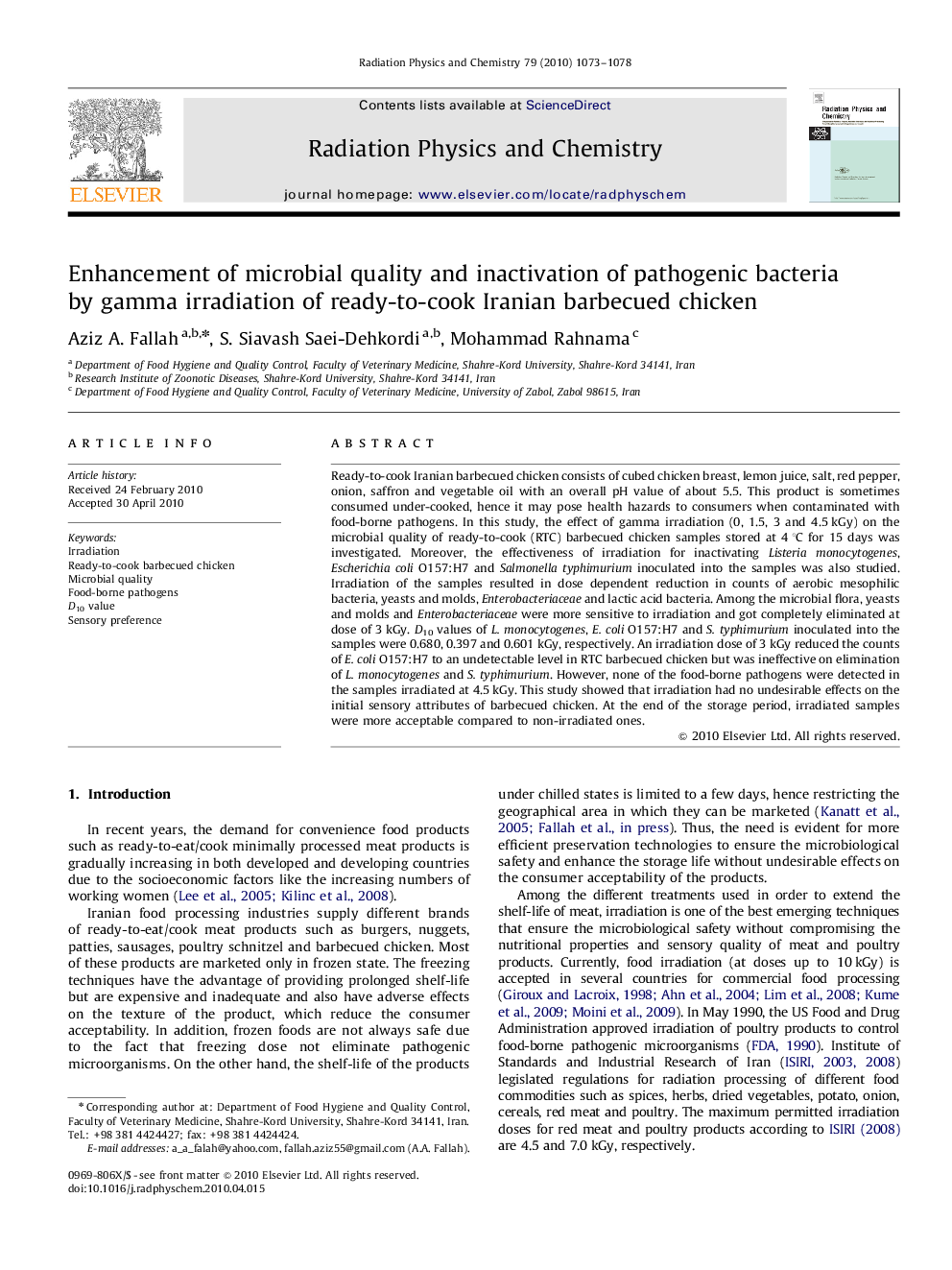| کد مقاله | کد نشریه | سال انتشار | مقاله انگلیسی | نسخه تمام متن |
|---|---|---|---|---|
| 1882890 | 1043266 | 2010 | 6 صفحه PDF | دانلود رایگان |

Ready-to-cook Iranian barbecued chicken consists of cubed chicken breast, lemon juice, salt, red pepper, onion, saffron and vegetable oil with an overall pH value of about 5.5. This product is sometimes consumed under-cooked, hence it may pose health hazards to consumers when contaminated with food-borne pathogens. In this study, the effect of gamma irradiation (0, 1.5, 3 and 4.5 kGy) on the microbial quality of ready-to-cook (RTC) barbecued chicken samples stored at 4 °C for 15 days was investigated. Moreover, the effectiveness of irradiation for inactivating Listeria monocytogenes, Escherichia coli O157:H7 and Salmonella typhimurium inoculated into the samples was also studied. Irradiation of the samples resulted in dose dependent reduction in counts of aerobic mesophilic bacteria, yeasts and molds, Enterobacteriaceae and lactic acid bacteria. Among the microbial flora, yeasts and molds and Enterobacteriaceae were more sensitive to irradiation and got completely eliminated at dose of 3 kGy. D10 values of L. monocytogenes, E. coli O157:H7 and S. typhimurium inoculated into the samples were 0.680, 0.397 and 0.601 kGy, respectively. An irradiation dose of 3 kGy reduced the counts of E. coli O157:H7 to an undetectable level in RTC barbecued chicken but was ineffective on elimination of L. monocytogenes and S. typhimurium. However, none of the food-borne pathogens were detected in the samples irradiated at 4.5 kGy. This study showed that irradiation had no undesirable effects on the initial sensory attributes of barbecued chicken. At the end of the storage period, irradiated samples were more acceptable compared to non-irradiated ones.
Journal: Radiation Physics and Chemistry - Volume 79, Issue 10, October 2010, Pages 1073–1078